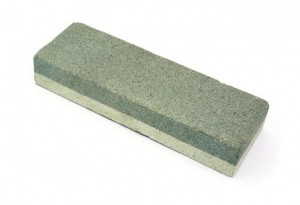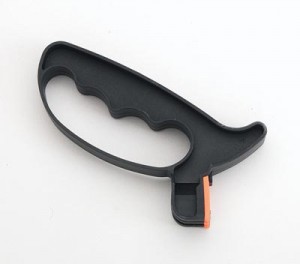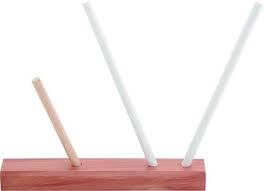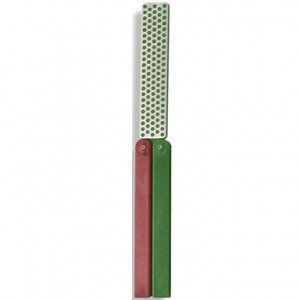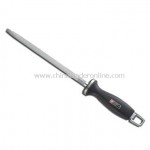Last week I wrote Sharpening Knives, Part 1: Choosing The Right Sharpener. As I stated, “what makes it easier to sharpen a knife is to have the right sharpener”. Now that you have a good ‘whetstone’, how do you get a good edge on your knife?
“Knife Sharpening is the process of making a knife or similar tool sharp by grinding against a hard, rough surface, typically stone”.
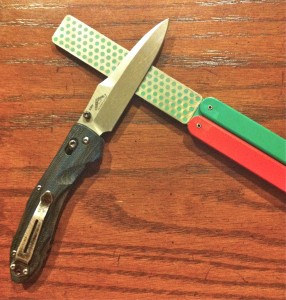 Assuming you have a DMT folding sharpening stone (like I prefer/recommended) start by holding the stone in your non-dominant hand and holding the knife in your dominant hand. If your blade is dull start sharpening it on the coarse side of the stone; if it has a decent edge maybe you can start off with the finer side. As you sharpen the knife you don’t need to apply much pressure, just a gentle firm push/pull across. As you work the blade across the stone some people like to imagine that they’re trying to shave off a very slim piece of the stones surface.
Assuming you have a DMT folding sharpening stone (like I prefer/recommended) start by holding the stone in your non-dominant hand and holding the knife in your dominant hand. If your blade is dull start sharpening it on the coarse side of the stone; if it has a decent edge maybe you can start off with the finer side. As you sharpen the knife you don’t need to apply much pressure, just a gentle firm push/pull across. As you work the blade across the stone some people like to imagine that they’re trying to shave off a very slim piece of the stones surface.
When you’re sharpening a knife the most difficult part is finding, then maintaining, the correct angle. You want to position the knife at approximately 20 degrees (or about the angle that is already visible on the blade’s edge) against the stone. It takes practice to develop a “feel” for the correct angle. There are sharpening guides available that hold the knife at the proper angle–but as a prepper I believe it’s worth taking the time to learn the skill. The smaller the angle the sharper the knife will become, but the less strength the edge itself will have and it will bend much easier (e.g. a straight razor has a much smaller angle to produce the razor edge, it is then stropped each time to make sure the edge is straight and polished). Practice. You’ll get it, then you’ll get faster.
Both sides of the blade need to be sharpened equally, when you’re working on the coarser side of the stone it’s easier if you do about half-dozen on one side before you turn it over and do the other side. Make sure to do the same number of strokes, maintaining the same angle, holding the same amount of pressure, over the entire surface of the blade’s edge. Once the knife is noticeably sharper, switch to the finer side of the stone and this time alternate strokes one on each side of the knife.
The knife is sharp when you think it is. You’re not going for a razor edge, unless you’re sharpening a razor. For most knives sharp enough is good enough. As you practice it’ll become smoother, faster, and more natural. As you develop the habit of keeping up the edge you’ll find you just need to do a few strokes across a fine stone to keep it ready.
Here’s a good, how-to, knife sharpening video that sums all this up:
http://www.youtube.com/watch?v=nWJMEWck3WI&feature=relmfu
(Wednesday: Sarah’s View)

